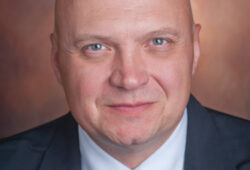Sherri Neal, vice president, Cultural Development and Inclusion for HCA, offers the following insights for forging generational engagement and harmony among the different generational groups.
1. Make a conscious effort to manage your own generational bias. Born in 1962, Neal describes herself as a “cusper,” sharing characteristics with baby boomers and GenXers, yet also often thinking through the lens of her millennial children.
“Millennials represent the lowest rate of healthcare consumption, but perhaps they’re just different kinds of consumers of healthcare,” she says. “The world is technology for them, so they can always look on the internet to validate a doctor’s advice, whereas I would probably just listen to and trust the authority figure.
“Some might say of the millennial checking her phone, ‘Wow this person is rude,’ ” Neal continues. “But that’s not necessarily true. The way millennials process information is to multi-task. They’re looking for quick turnaround and fast interaction.”
Neal underscores that everyone receives and processes information based on many factors, including generational biases. “Sometimes the millennials who work for me say that I talk to them like they’re my kids. I have to listen to feedback like that to understand my biases before I can work to get rid of them.”
2. Ask a lot of questions to decipher generational expectations. Each generation has unique characteristics that inform expectations and behavior, Neal says. “If 80 percent of your patients are traditionalists, find out what’s important to them. From what lens are they viewing healthcare? Do they want to go slowly through all the steps behind a decision, or do they just want the fast answer and then go on their way?”
Neal gives the example of a traditionalist with a Gen X primary care physician. “A traditionalist will get along with a Gen X doctor who treats her with respect and understands how she values hierarchy,” Neal says. “Traditionalists often rely on the healthcare system as the authority. They are very formal and often want to be referred to as Mrs. or Mr. They evaluate healthcare on how well their healthcare providers understand these unique needs.”
Neal also points out that many traditionalists are uneasy with the pace of change. “Once when I was in the hospital visiting an older family member, a young nurse came in and flew through the list of medications she needed to take. My relative asked no questions, but when the nurse left the room, she asked me to take a picture of the cup of pills. The family member said, ‘I’ll need this later. I couldn’t keep up with everything she said.’ ”
3. Start a dialogue and commit to learning more about different generations. “Everyone has to be intentional about creating a culture of inclusion,” Neal urges. “It doesn’t always come naturally, but the better you get at closing the communication gap, the better you’ll be able to relate to different generations and the more progress we’ll all make.”
Share Email Care Delivery, Patient Care, Q3 2016





